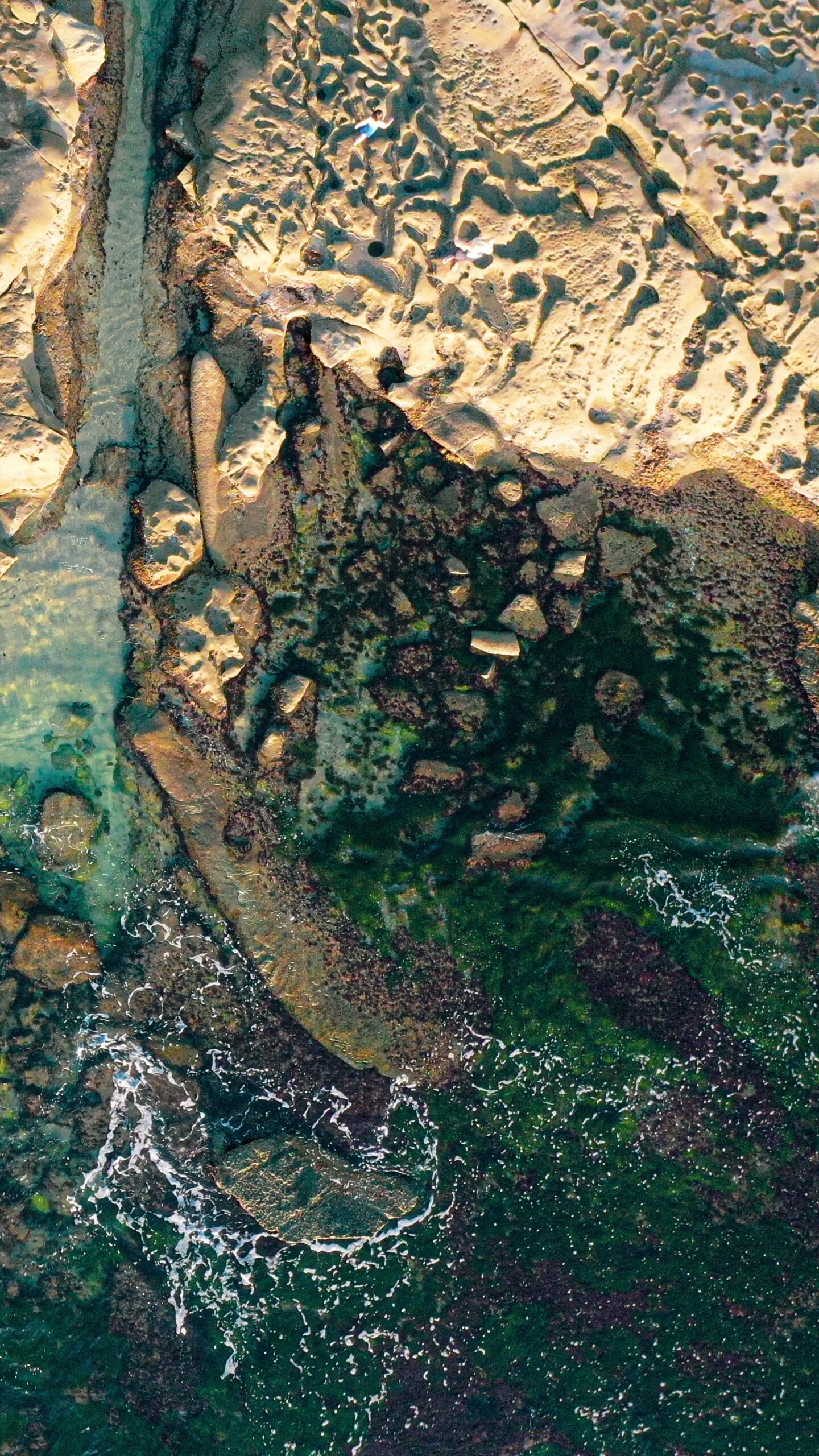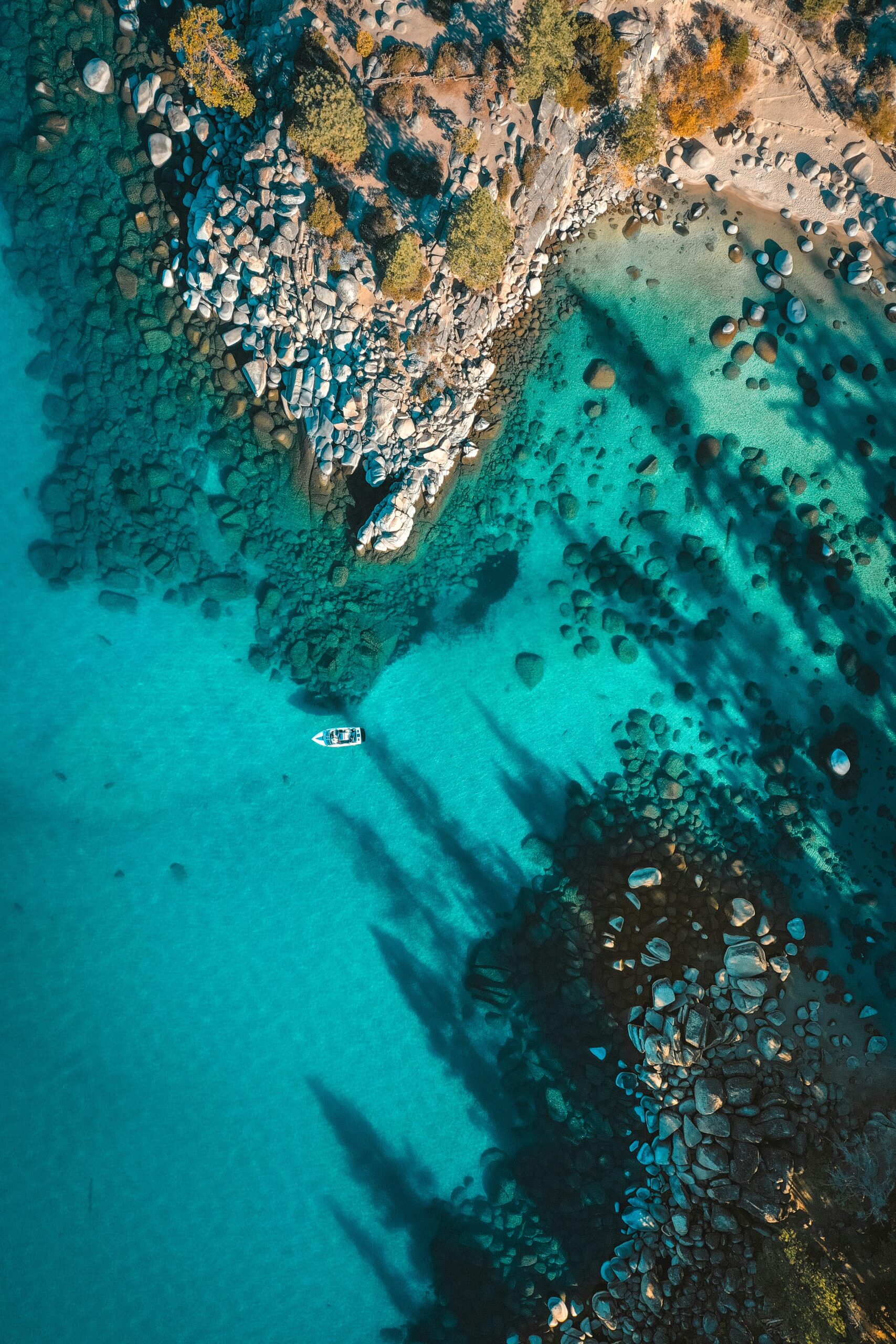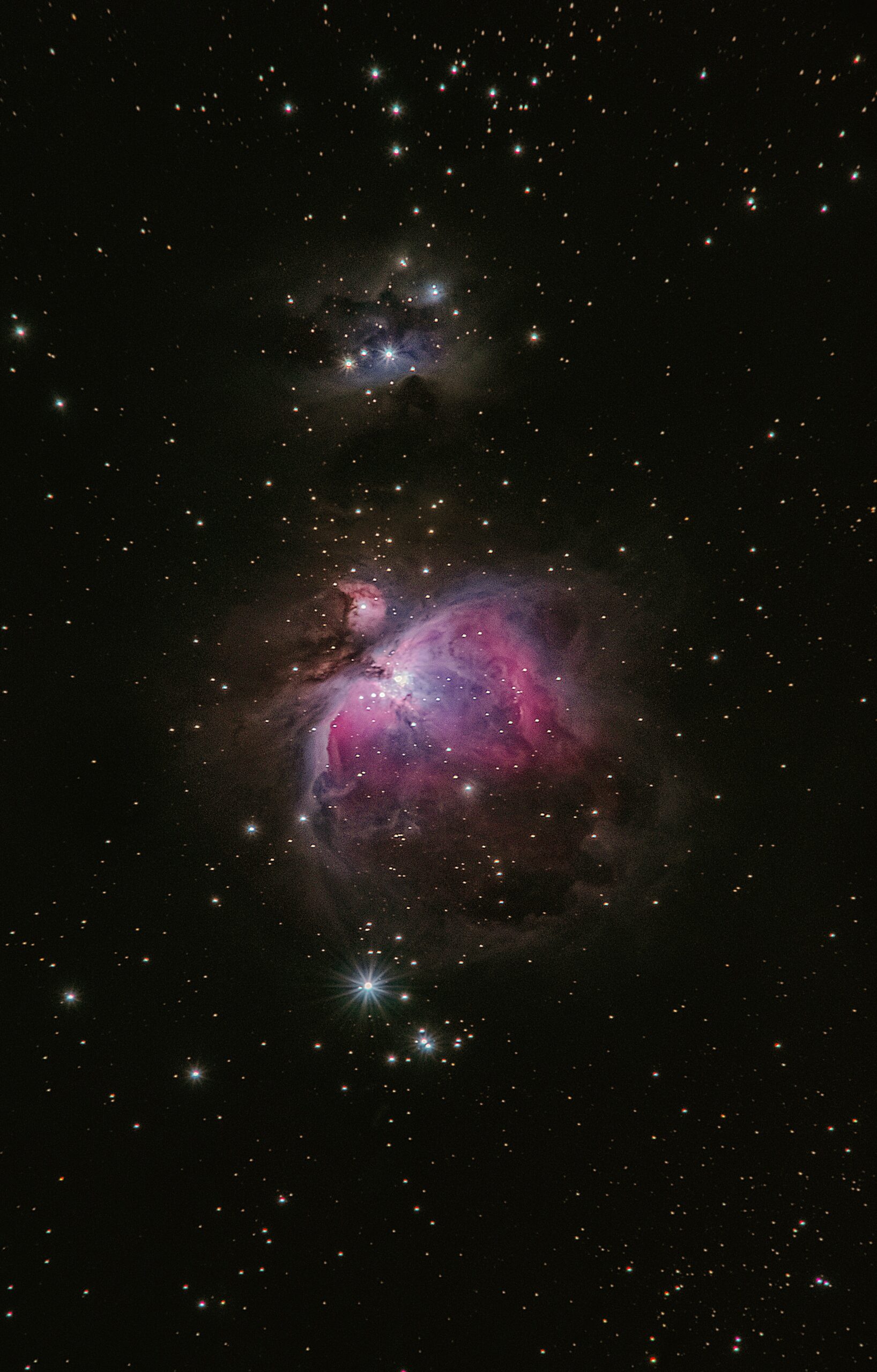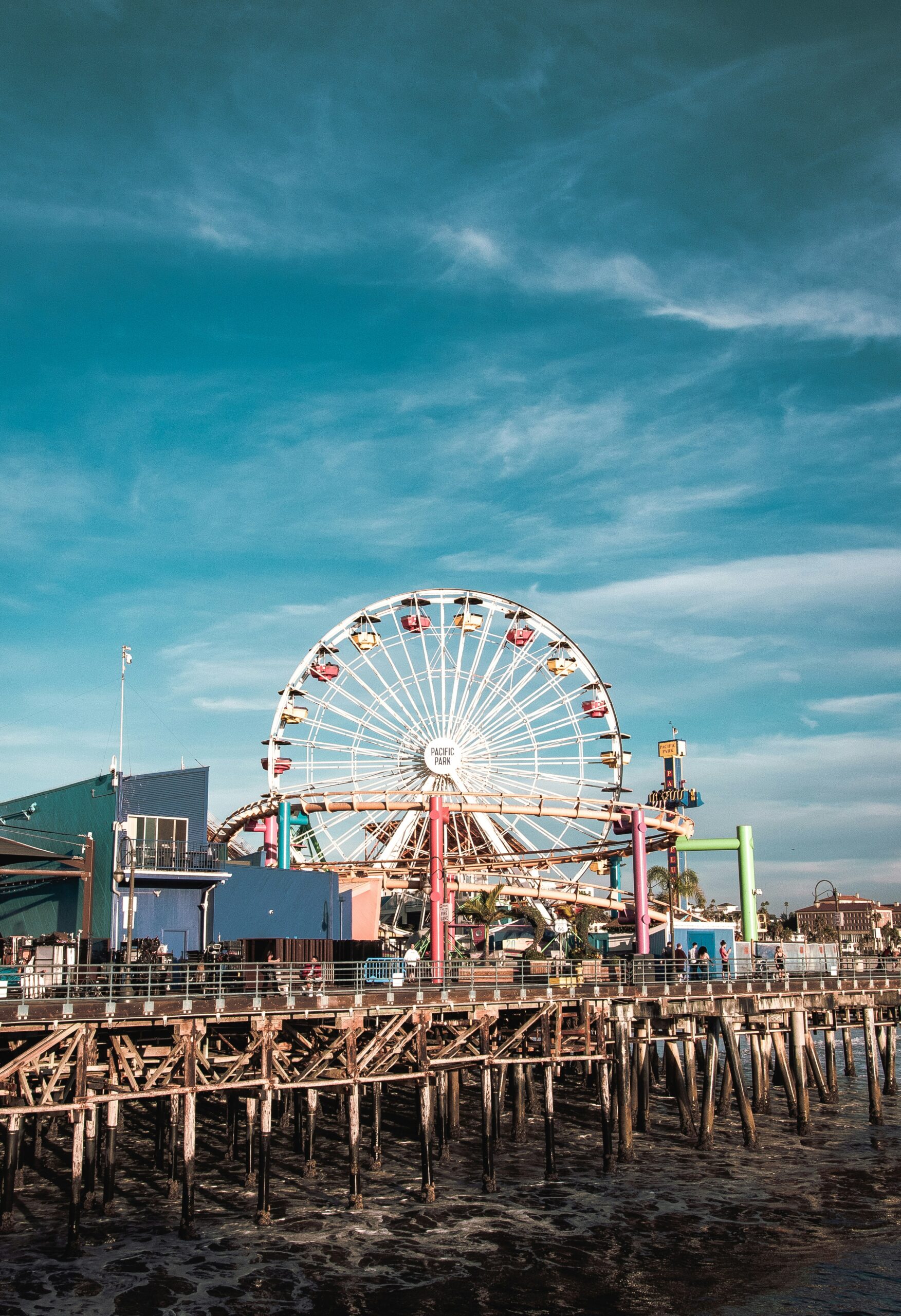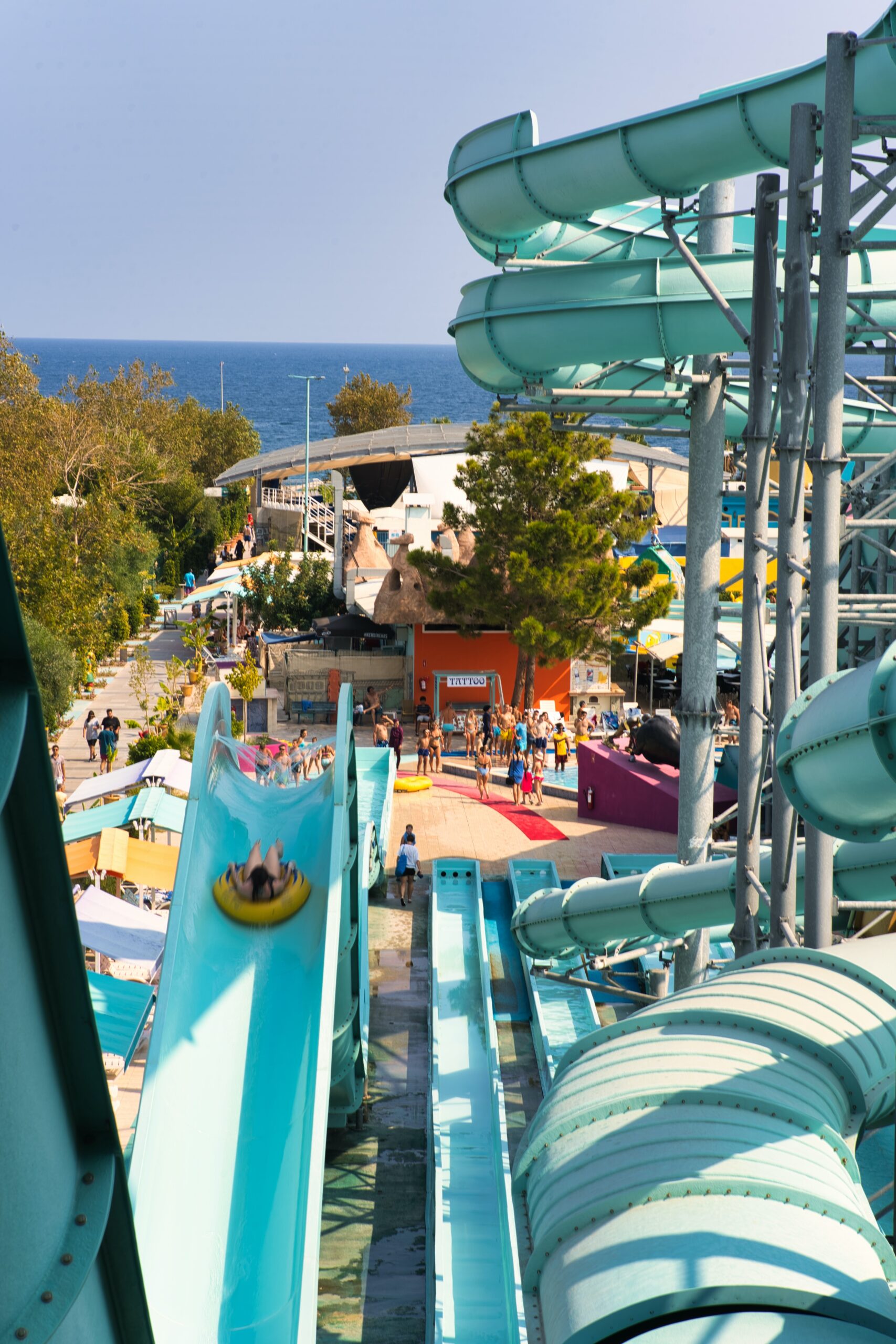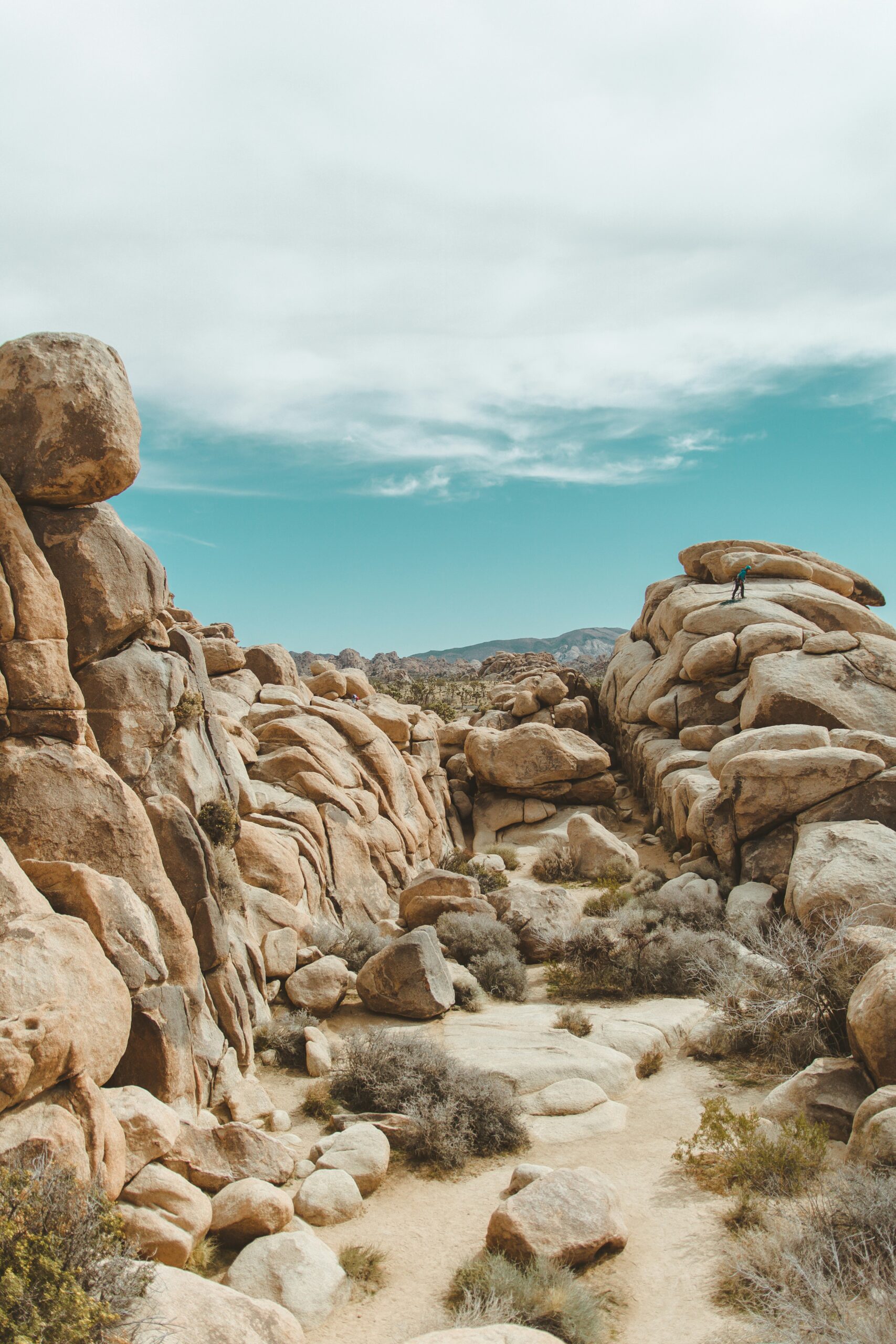Tide Pools in Southern California: Exploring the Fascinating Marine Life
Are you looking for a unique outdoor experience in Southern California? Look no further than the region's beautiful tide pools. These natural wonders are home to a variety of marine life and offer a fascinating glimpse into the ocean's depths.
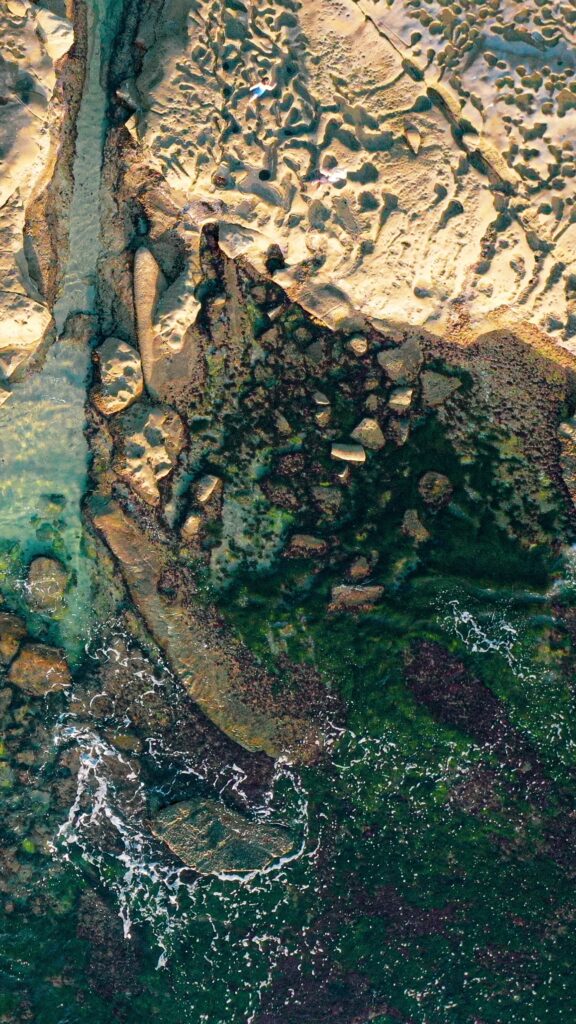
Southern California is home to a number of excellent tide pool locations, each with its own unique features and attractions. From the rugged shoreline of Palos Verdes to the sandy stretches of Crystal Cove State Park, there is something for everyone to enjoy. Whether you're an experienced tide pool explorer or a first-time visitor, you're sure to be amazed by the diverse array of creatures that call these pools home.
So why not plan a day trip or weekend getaway to explore the tide pools of Southern California? With so many incredible locations to choose from, you're sure to find a spot that suits your interests and preferences. Whether you're interested in marine biology, photography, or just enjoying the great outdoors, there's no better way to experience the beauty of the California coast than by exploring its tide pools.
Tide Pools in Southern California: Exploring the Fascinating Marine Life
Understanding Tide Pools
Tide pools are rocky pools of seawater that form in rocky intertidal zones when the tide recedes. These pools are home to a variety of marine life such as anemones, crabs, snails, and small fish. Tide pools are a fascinating and unique ecosystem that can be found all along the Southern California coast. In this section, we will discuss the formation and characteristics of tide pools as well as tidal movements and tide tables.
Formation and Characteristics
Tide pools are formed when the tide recedes and leaves behind pools of seawater in rocky areas along the coast. These pools are typically found in rocky intertidal zones where the water recedes from the shore. The size and shape of tide pools can vary depending on the shape and size of the rocks they form in. Some tide pools are shallow and wide, while others are deep and narrow.
Tide pools are characterized by the types of marine life that inhabit them. The animals that live in tide pools are adapted to survive in the harsh intertidal environment where they are exposed to air and sun during low tide and submerged in water during high tide. Some tide pool animals have evolved to cling to rocks to avoid being swept away by waves, while others have developed hard shells to protect themselves from predators.
Tidal Movements and Tide Tables
To explore tide pools, you need to know when the tide is low. The best time to explore tide pools is during low tide when the water recedes and exposes the rocky pools. Tidal movements are caused by the gravitational pull of the moon and the sun. Tide tables are used to predict the height and timing of the tides.
Before you go tide pooling, it is important to check the tide tables for the time and height of the waves in the area that you will be visiting. Tide tables can be found online or in local newspapers. It is also important to be aware of the tide while you are exploring the tide pools. You don't want to get caught in a rising tide and be stranded on the rocks.
In summary, tide pools are a unique and fascinating ecosystem that can be found all along the Southern California coast. They are formed in rocky intertidal zones when the tide recedes, and they are characterized by the types of marine life that inhabit them. To explore tide pools, you need to know when the tide is low, which can be predicted using tide tables. Remember to always be aware of the tide while exploring the tide pools to ensure your safety.
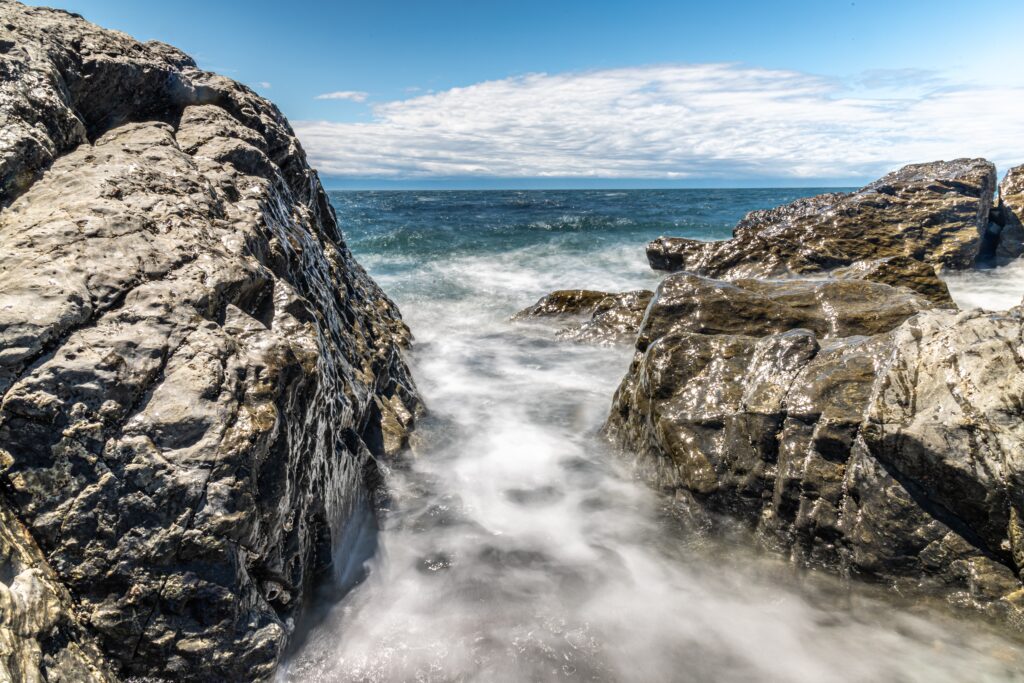
Locations of Tide Pools in Southern California
If you're looking for a fun and educational activity to do in Southern California, tide pooling is an excellent option. Tide pools are rocky areas that are filled with seawater during high tide and reveal many marine creatures during low tide. Here are some of the best locations to explore tide pools in Southern California.
La Jolla and San Diego Area
La Jolla Cove in San Diego is a popular destination for tide pooling. At low tide, you'll find a variety of sea creatures such as crabs, sea stars, and anemones. Another great spot is Point Loma Tide Pools at Cabrillo National Monument in San Diego. Here, you'll find a diverse range of marine life, including octopuses, sea hares, and sea urchins.
Malibu to Santa Barbara
Leo Carrillo State Park in Malibu is a great place to explore tide pools. The park has two beach areas that are home to many marine creatures such as sea anemones, starfish, and crabs. Another spot to check out is Arroyo Burro Beach in Santa Barbara. The beach has many tide pools that are filled with colorful sea creatures.
Orange County Gems
Newport Beach is home to Little Corona Del Mar, a small beach with many tide pools. The beach is located at the end of Ocean Boulevard and has many rocky areas to explore. Laguna Beach is another great location to explore tide pools. You can find many popular tide pool areas such as Rockpile, Fisherman's Cove, and Crescent Bay. Abalone Cove Shoreline Park in Palos Verdes is also a great spot to explore tide pools. The park has many rocky areas that are home to many sea creatures, including sea urchins, sea stars, and crabs.
Overall, Southern California has many great locations to explore tide pools. Remember to follow the rules and regulations of each location and respect the marine life you encounter. Happy tide pooling!
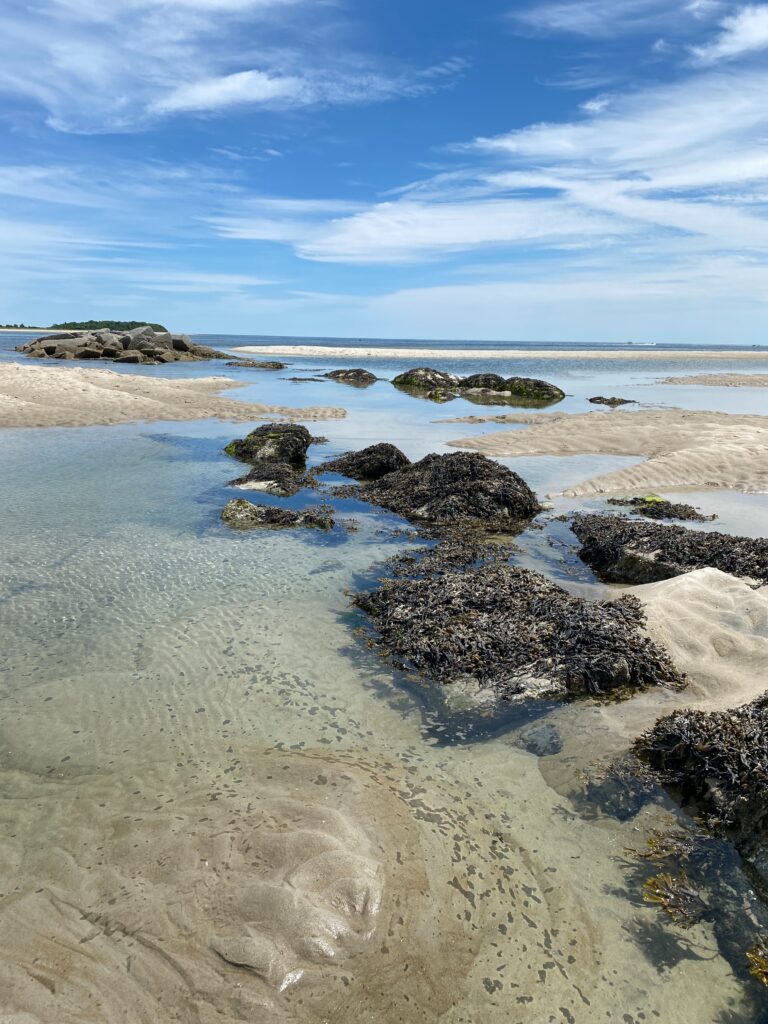
Related Post:
Marine Life in Tide Pools
Tide pools in Southern California are home to a diverse range of marine life. From colorful sea anemones to elusive octopuses, tide pools offer a chance to witness the wonders of marine life up close. In this section, we will explore the common inhabitants of tide pools and their adaptations to tide pool life.
Common Inhabitants
The following are some of the common inhabitants of tide pools in Southern California:
- Mussels
- Snails
- Barnacles
- Urchins
- Sea stars
- Anemones
- Crabs
- Hermit crabs
- Chitons
Mussels are bivalves that attach themselves to rocks or other hard surfaces. They are filter feeders and play an important role in the ecosystem of tide pools.
Snails are gastropods that move slowly and graze on algae. They are an important food source for many other animals in tide pools.
Barnacles are crustaceans that attach themselves to rocks or other hard surfaces. They are filter feeders and can be seen opening and closing their shells to capture food.
Urchins are echinoderms that are covered in spines. They graze on algae and can be seen moving slowly across the rocks.
Sea stars are also echinoderms and can be found in a variety of colors. They feed on mussels, snails, and other small animals.
Anemones are cnidarians that have stinging cells to capture prey. They come in a variety of colors and can be seen attached to rocks or other hard surfaces.
Crabs and hermit crabs are crustaceans that scavenge for food. They can be seen crawling across the rocks or hiding in crevices.
Chitons are mollusks that have a shell made up of eight plates. They graze on algae and can be seen moving slowly across the rocks.
Adaptations to Tide Pool Life
The animals that live in tide pools have developed a number of adaptations to survive in this harsh environment. For example, many animals have developed the ability to close up their shells or hide in crevices to avoid drying out during low tide. Others have developed the ability to tolerate a wide range of temperatures and salinity levels.
Algae are also an important part of the ecosystem of tide pools. They provide food and shelter for many animals and help to stabilize the rocks. Some types of algae have developed the ability to survive in both wet and dry conditions, allowing them to thrive in the ever-changing environment of tide pools.
In conclusion, tide pools in Southern California are home to a fascinating array of marine life. From mussels to sea stars, each animal has developed unique adaptations to survive in this harsh environment. Take some time to explore the tide pools and discover the wonders of sea life that await you.
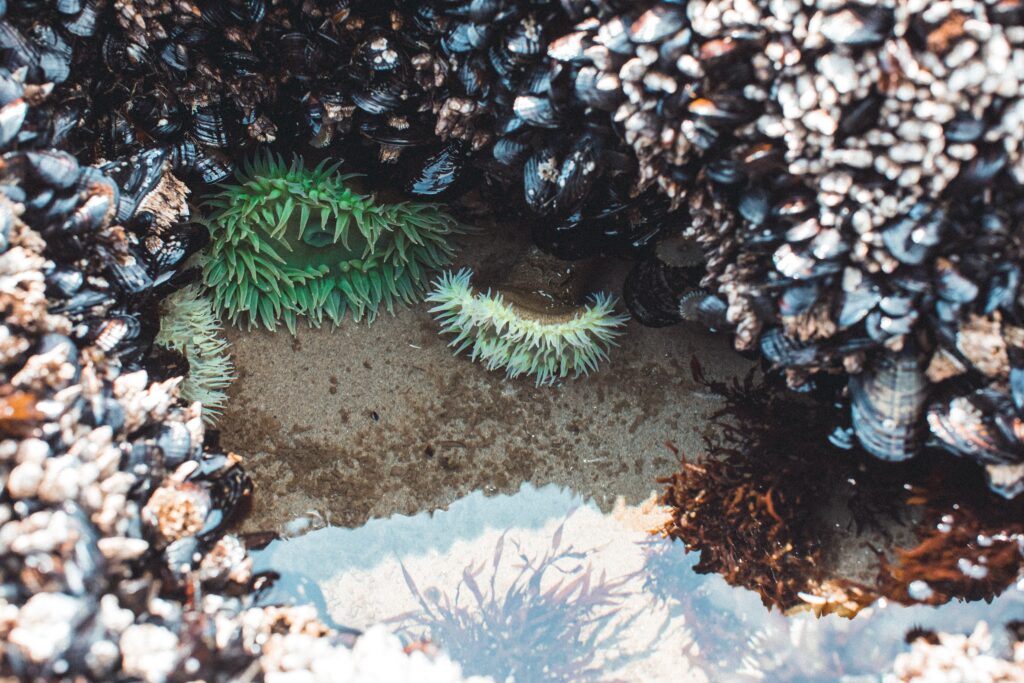
Conservation and Protection
Tide pools are home to a diverse array of marine life, making them a precious resource that requires conservation and protection. Here are some important things to keep in mind when visiting tide pools in Southern California.
Responsible Tide Pooling
Tide pooling is an exciting activity, but it's important to be responsible and respectful when exploring these delicate ecosystems. Here are some guidelines to follow:
- Watch your step: Be careful where you step and avoid stepping on any living creatures. Rocks and other surfaces can be slippery, so wear appropriate footwear and take your time.
- Look, but don't touch: Resist the temptation to pick up or move any creatures you come across. Even seemingly harmless actions can disrupt the balance of the ecosystem.
- Leave no trace: Take all your trash with you and avoid leaving anything behind. This includes food scraps, plastic, and other litter that can harm marine life.
By being responsible and respectful, you can help preserve these unique habitats for future generations.
Regulations and Best Practices
To protect tide pools and the marine life that inhabits them, there are regulations and best practices to follow. Here are a few key ones:
- Stay on designated paths: Many tide pools have designated paths to help visitors navigate the area without causing damage. Stick to these paths and avoid venturing off on your own.
- Observe from a distance: Use binoculars or a camera with a zoom lens to observe marine life from a safe distance. This will help prevent accidental damage to the ecosystem.
- Follow local regulations: Some tide pools may have specific regulations in place to protect the area. Be sure to follow any posted signs or guidelines, and ask a park ranger if you have any questions.
By following these regulations and best practices, you can help protect Southern California's tide pools and the marine life that calls them home.
Best Time to Visit Tide Pools
If you are planning a trip to Southern California, you must visit the tide pools to see the fascinating marine life. However, it is essential to know the best time to visit tide pools to ensure that you see the most variety of marine life. In this section, we will discuss the seasonal changes and daily tide schedules to help you plan your visit.
Seasonal Changes
The best time to visit tide pools is during the winter months, from November to March. During this time, the tides are lower, and the marine life is more abundant. The water is also clearer, making it easier to see the creatures that live in the tide pools. However, it is important to note that the winter months can be rainy, so be sure to check the weather forecast before you plan your visit.
During the summer months, from June to September, the tides are higher, and the marine life is less visible. The water can also be murkier due to the warmer temperatures. If you plan to visit during the summer, try to visit during the early morning or late afternoon when the tides are lower.
Daily Tide Schedules
To plan your visit to the tide pools, you must check the daily tide schedules. The best time to visit tide pools is during low tide, when the water is at its lowest point. You can check the tide tables for the time and height of the waves in the area that you will be visiting.
It is best to visit the tide pools during the early morning or late afternoon when the tide is at its lowest. During the middle of the day, the tide is usually higher, and the marine life may be less visible.
In conclusion, the best time to visit tide pools in Southern California is during the winter months and during low tide. Be sure to check the daily tide schedules before you plan your visit and try to visit during the early morning or late afternoon for the best experience.
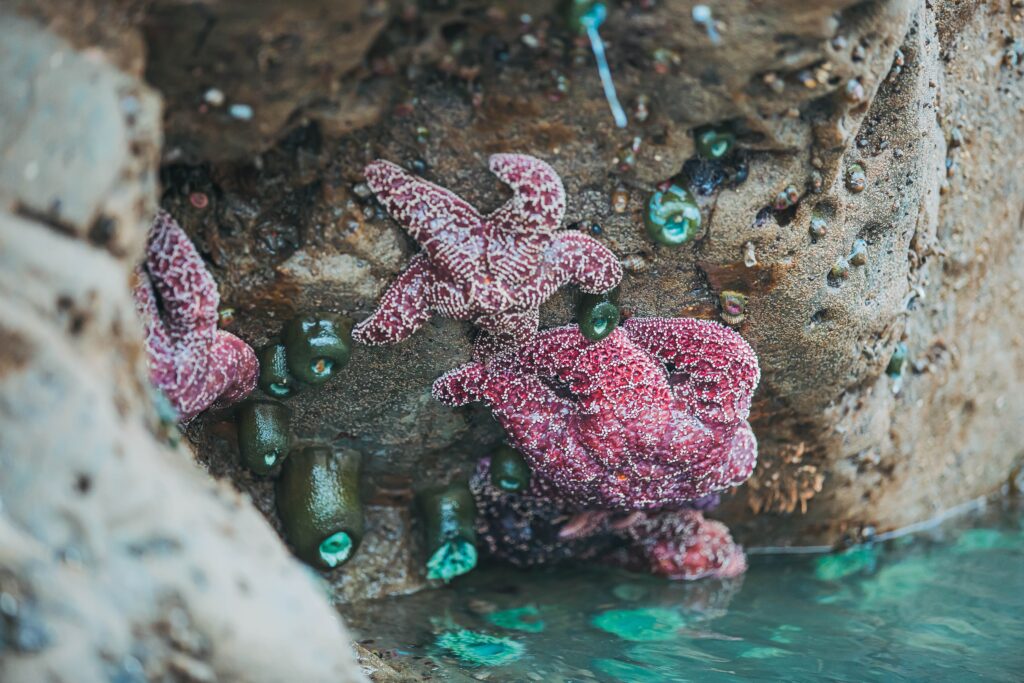
Tide Pooling for All Ages
Tide pooling is a fun and educational activity that can be enjoyed by people of all ages. Whether you're a family with young children or an adult looking for a unique outdoor experience, Southern California's tide pools offer something for everyone.
Family-Friendly Locations
When it comes to tide pooling with children, safety and accessibility are key. Some of the best family-friendly tide pooling locations in Southern California include:
- Cabrillo National Monument in San Diego: This park offers easy access to tide pools with plenty of parking and restrooms nearby. The park also has a visitor center with educational exhibits and ranger-led programs.
- Little Corona Beach in Newport Beach: This beach has a small, protected cove that is perfect for young children to explore. The tide pools are easily accessible from the beach, and there are plenty of nearby amenities such as restrooms and a playground.
- Abalone Cove Shoreline Park in Palos Verdes: This park has several tide pools that are easily accessible from the parking lot. The park also offers guided tide pool tours for families.
Safety Tips for Children and Adults
Tide pooling can be a fun and safe activity as long as you take the proper precautions. Here are some safety tips to keep in mind:
- Wear sturdy shoes with good traction to avoid slipping on wet rocks.
- Check the tide schedule before you go to make sure the tide is low enough for safe tide pooling.
- Never turn your back on the ocean, and be aware of sneaker waves that can come out of nowhere.
- Don't touch or disturb any marine life you find in the tide pools. It's important to respect these fragile ecosystems and their inhabitants.
By following these safety tips and choosing a family-friendly location, you can enjoy a fun and educational day of tide pooling with your loved ones.
Photography and Tide Pools
If you're planning to visit Southern California's tide pools, consider bringing your camera along to capture the beauty of the marine life and the stunning landscapes. Here are some tips for taking great photos of tide pools.
Capturing Marine Life
Tide pools are home to a variety of colorful marine life, such as anemones, starfish, crabs, and sea urchins. To capture these creatures in your photos, use a macro lens or a zoom lens with a macro setting to get up close and personal. Be sure to get down low so you can shoot at eye level with the creatures and capture their unique features.
When photographing marine life, try to capture their natural behavior. For example, you could capture a crab scavenging for food or a sea urchin moving along the rocks. Be patient and wait for the right moment to capture the perfect shot.
Landscape and Seascape Techniques
In addition to the marine life, the surrounding landscape and seascape make for stunning photos. To capture the landscape, try using a wide-angle lens to get a broader view of the tide pools and the surrounding area. You can also experiment with different angles and perspectives to capture unique shots.
When shooting the seascape, consider using a polarizing filter to reduce glare and enhance the colors of the water and sky. You can also try using a slow shutter speed to capture the movement of the waves and create a soft, dreamy effect.
Remember to respect the tide pools and the marine life when taking photos. Avoid touching or disturbing the creatures and their habitats, and always follow the rules and regulations of the area you're visiting. With these tips, you can capture beautiful and memorable photos of Southern California's tide pools.

Educational Opportunities
If you're interested in learning more about tide pools and the marine life that inhabits them, Southern California offers several educational opportunities for both children and adults.
Guided Tours and Walks
Many beaches in Southern California offer guided tours and walks of their tide pools. These tours are typically led by knowledgeable guides who can teach you about the different types of marine life that you might encounter in the tide pools. Some popular beaches that offer guided tours include Hollister Ranch and Abalone Cove Shoreline Park.
Learning Resources
If you're unable to attend a guided tour, there are still plenty of learning resources available to you. For example, the California State Parks website offers a guide to tide pool ecology that includes information on the different types of marine life that you might encounter in the tide pools. Additionally, the website Home Science Tools offers a guide to tide pools that is geared towards children in grades PreK-2.
Whether you're interested in educational opportunities for yourself or your children, Southern California offers plenty of options for learning about tide pooling and marine life.
Exploring Beyond Tide Pools
Southern California is a treasure trove of natural beauty and outdoor activities. Beyond exploring the tide pools, there are plenty of other things to do and see in the area. Whether you're looking for a challenging hike or a relaxing day at the beach, there's something for everyone.
Nearby Hiking and Outdoor Activities
Southern California is home to some of the best hiking trails in the world. From the rugged terrain of Joshua Tree National Park to the stunning views of the Pacific Ocean, there's no shortage of outdoor adventures to be had. Some popular hiking trails in the area include:
- Mount Baldy: This challenging hike takes you to the summit of Mount Baldy, the highest peak in the San Gabriel Mountains.
- Griffith Park: Located in the heart of Los Angeles, Griffith Park offers miles of hiking trails, as well as a zoo, observatory, and other attractions.
- Torrey Pines State Reserve: This beautiful coastal reserve offers hiking trails with stunning ocean views, as well as a beach and picnic areas.
In addition to hiking, there are plenty of other outdoor activities to enjoy in Southern California. Surfing, kayaking, and paddleboarding are popular water sports, while golfing, horseback riding, and rock climbing are also available in the area.
Local Attractions and Amenities
Southern California is home to some of the most iconic attractions in the world. From the Hollywood Walk of Fame to Disneyland, there's no shortage of things to see and do in the area. Some popular local attractions include:
- Universal Studios Hollywood: This popular theme park offers rides, shows, and attractions based on popular movies and TV shows.
- Santa Monica Pier: This historic pier offers an amusement park, aquarium, and plenty of restaurants and shops.
- La Brea Tar Pits: This natural history museum features exhibits on prehistoric animals and the famous tar pits.
In addition to these attractions, Southern California is also home to plenty of amenities. Whether you're looking for a luxury resort or a budget-friendly motel, there are plenty of lodging options available. The area also offers a wide variety of restaurants, shopping centers, and other amenities to make your stay as comfortable as possible.
Tide Pool Etiquette
When visiting tide pools in Southern California, it's important to follow proper etiquette to ensure that you don't harm the delicate ecosystem and its inhabitants. Here are some do's and don'ts to keep in mind:
Do's and Don'ts
- Do check the tide charts before heading out to the tide pools. It's best to go during low tide when the water is at its lowest point, and you'll have more time to explore the pools before the tide rises again. You can find tide charts online or through apps like U.S. Harbors and NOAA.
- Don't touch or disturb the marine life in the tide pools. These creatures are fragile and can easily be harmed or killed by human interference. It's important to observe them from a safe distance and avoid stepping on or touching them.
- Do wear sturdy beach footwear to protect your feet from sharp rocks and slippery surfaces. Tide pools can be treacherous, and it's important to wear shoes that will give you good traction and protect your feet.
- Don't take anything from the tide pools. This includes rocks, shells, and other natural objects. These items are an important part of the ecosystem and should be left in place.
- Do pack out all of your trash and leave the tide pools cleaner than you found them. Litter can harm marine life and disrupt the delicate balance of the ecosystem.
Contributing to Conservation
By following proper etiquette when visiting tide pools, you can help contribute to the conservation and protection of these fragile ecosystems. Here are some ways you can do your part:
- Be respectful of the marine life and their habitat. Remember that you are a guest in their home, and it's important to treat them with respect and care.
- Join a local conservation group to learn more about tide pools and how you can help protect them. These groups often organize beach cleanups and other events to raise awareness about the importance of conservation.
- Spread the word about tide pool etiquette to your friends and family. By educating others about the importance of proper etiquette, you can help ensure that these ecosystems are protected for generations to come.
Remember, tide pools are a unique and fragile ecosystem that require our protection and care. By following proper etiquette and contributing to conservation efforts, we can help ensure that they remain a beautiful and thriving part of Southern California's coastline.
Frequently Asked Questions
What types of marine life can I expect to see in Southern California tide pools?
Southern California tide pools are home to a diverse range of marine life. You can expect to see everything from colorful anemones, starfish, crabs, and sea urchins to small fish and snails. You may even spot octopuses, sea hares, and sea cucumbers if you're lucky! Remember to look but don't touch, as many of these creatures are delicate and can be harmed by human interaction.
How do I find the best time to visit tide pools for optimal viewing?
The best time to visit tide pools is during low tide, which exposes more of the rocks and marine life. You can check tide charts online or at your local beach to find out when low tide occurs. Be sure to plan your visit accordingly and arrive early to avoid crowds.
Which beaches in Laguna are known for their exceptional tide pools?
Laguna Beach is a prime location for tide pooling, with several beaches known for their exceptional tide pools. Some of the best beaches for tide pooling in Laguna include Shaw's Cove, Crescent Bay, and Rockpile Beach. These beaches offer a variety of marine life and are easily accessible.
Are there any recommended tide pool spots in the Los Angeles area?
Yes, there are several great tide pool spots in the Los Angeles area. Abalone Cove Shoreline Park in Rancho Palos Verdes is one of the best places in all of Southern California for tide pooling. Other recommended spots include Leo Carrillo State Park in Malibu, Cabrillo Beach in San Pedro, and Point Dume State Beach in Malibu.
Can you suggest some family-friendly tide pool locations in Southern California?
Yes, there are many family-friendly tide pool locations in Southern California. Some great options include Crystal Cove State Park in Newport Beach, La Jolla Cove in San Diego, and Corona Del Mar State Beach in Newport Beach. These locations offer easy access to tide pools and are safe for families with children.
What should I keep in mind regarding safety and conservation when visiting tide pools?
When visiting tide pools, it's important to keep safety and conservation in mind. Wear sturdy shoes with good traction to avoid slipping on wet rocks, and be sure to watch your step. Avoid touching or disturbing marine life, as this can harm the delicate ecosystem. Remember to pack out all trash and leave the tide pools as you found them, so future generations can enjoy them too.

